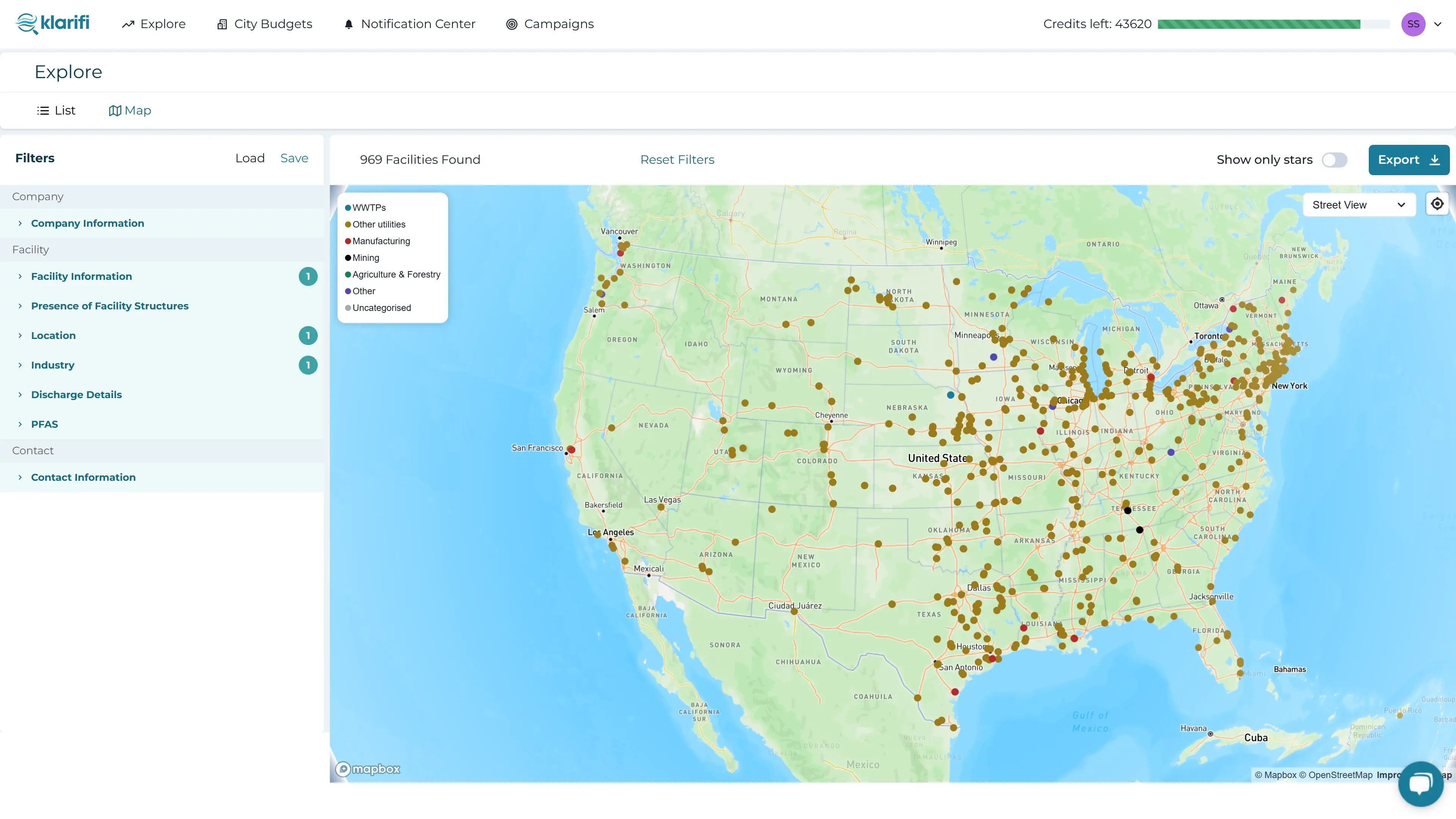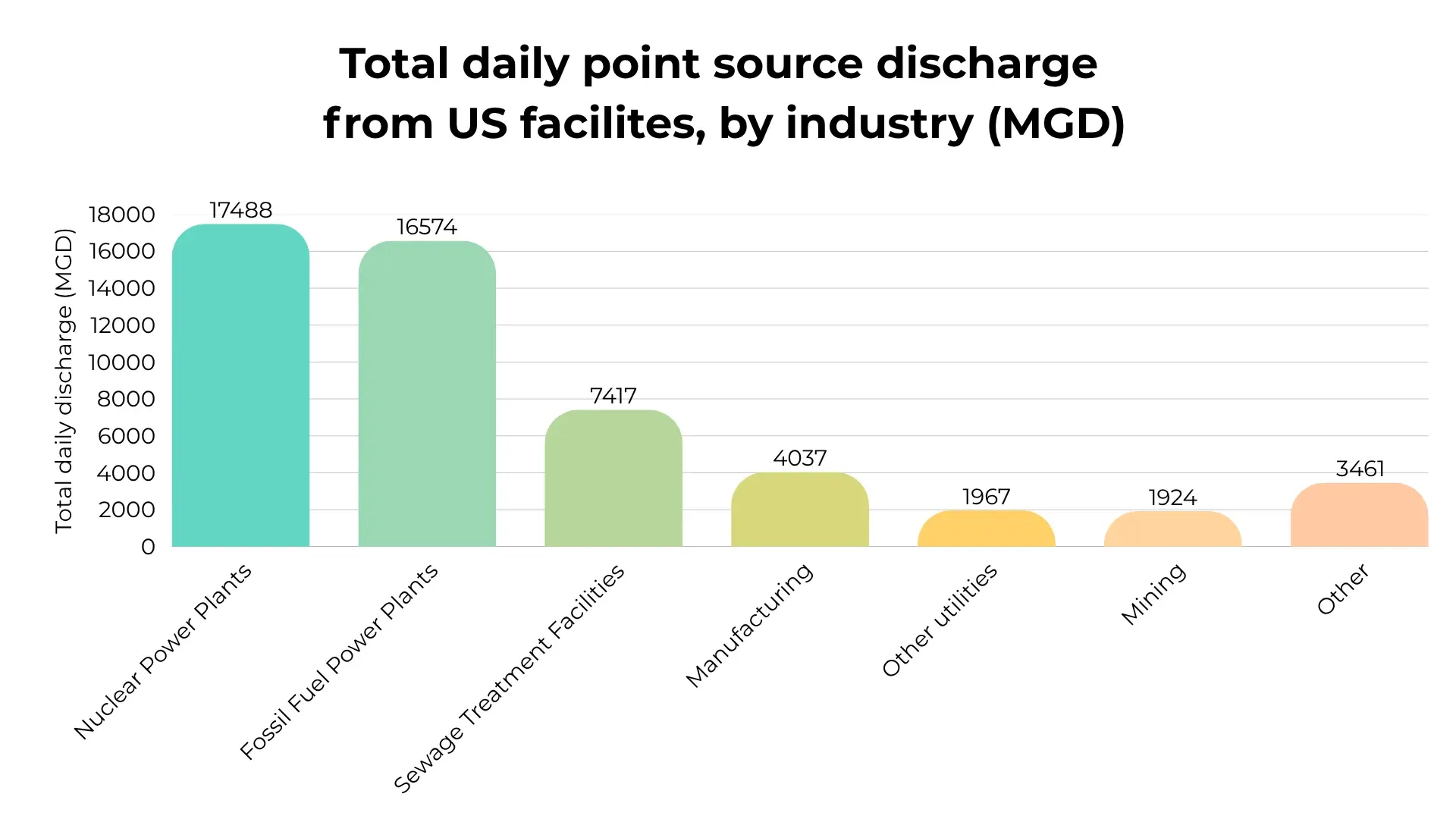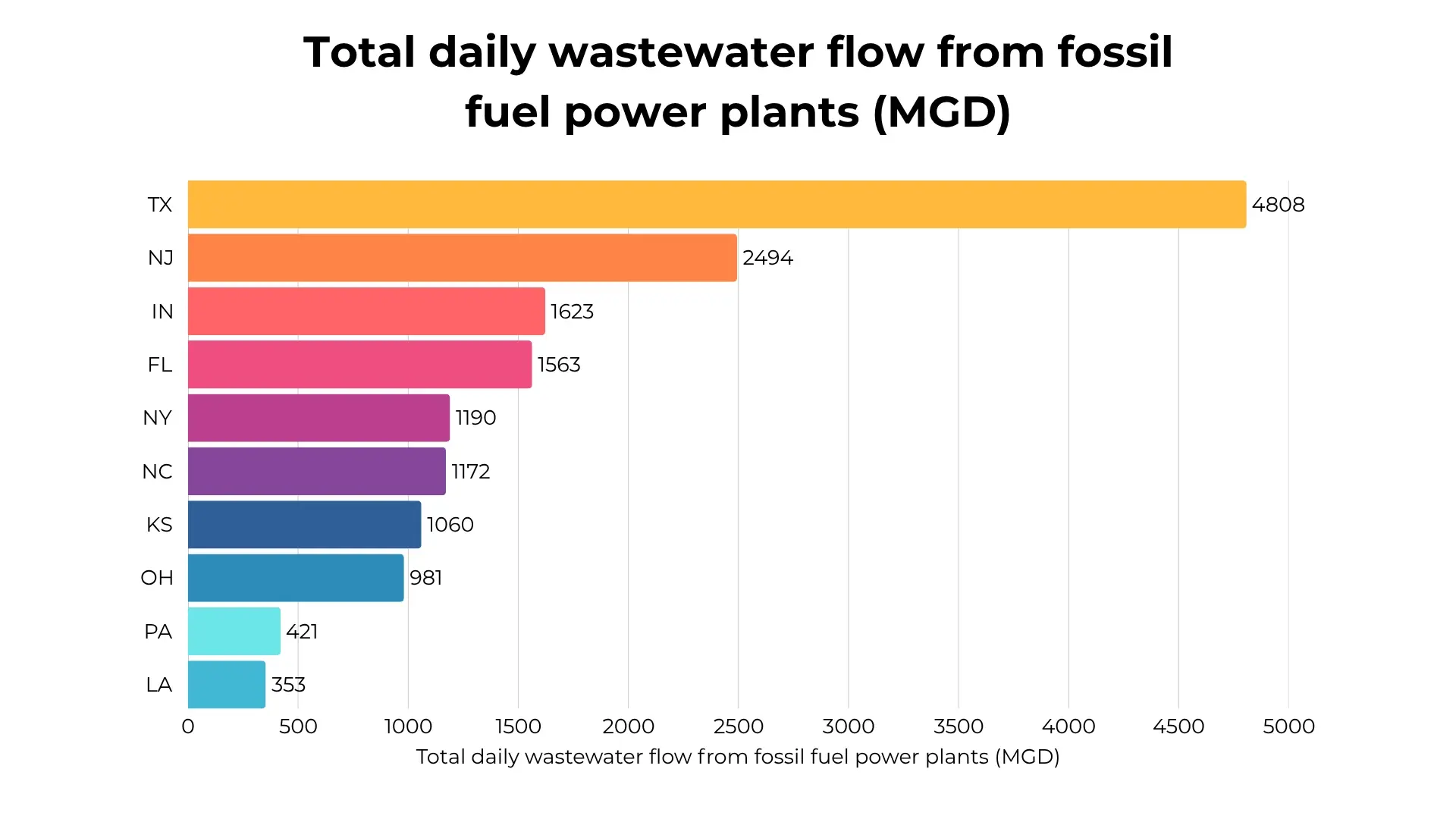The US EPA is considering the balance between low-cost electricity and water resource protection. This could have major consequences as discharge from power plants is one of the biggest sources of wastewater in the USA, Klarifi data shows.
The regulatory pendulum swings
In March 2024, the EPA issued its 2024 Final Rule to strengthen certain discharge limitations in the Steam Electric Power Generating industry (fossil fuel power plants). The final rule was estimated to reduce pollutants discharged through wastewater from coal-fired power plants by approximately 660 million pounds per year.
The pendulum is now swinging in the other direction with the EPA's recent announcement of the biggest deregulatory action in U.S. history, which includes a "Reconsideration of limitations, guidelines and standards (ELG) for the Steam Electric Power Generating Industry to ensure low-cost electricity while protecting water resources".
EPA's reconsideration impact
EPA's reconsideration could impact over 900 fossil fuel power plants discharging wastewater into U.S. surface waters, with potentially major implications for water quality and public health – see the map below.

Figure 1: 969 fossil fuel power plants with direct wastewater discharge.
Fossil fuel power plants account for 31% of total non-hydro discharge
Klarifi's wastewater data platform provides insights into the plants' effluent, which is subject to limits on pH, suspended solids, oil & grease, nutrients, heavy metals, and more. Crucially, fossil fuel power plants account for 31% of the total daily discharge from US facilities (disregarding hydroelectric power plants), so the deregulation is affecting a very significant wastewater stream and could have major consequences for receiving waters.

Figure 2: Total daily point source discharge from US facilities, by industry (MGD), excluding hydroelectric power plants, only facilities submitting reporting on daily flow.
Texas is the state most affected by fossil power plant wastewater
Unsuprisingly, energy powerhouse Texas is the state with the largest daily flow, followed by New Jersey, Indiana, Florida and New York – see the chart below for the 10 states with largest total daily wastewater flow from fossil fuel power plants.

Figure 3: Ten states with the highest total daily flow from fossil-fuel power plants.
Key takeaways
As the EPA scales back the 2024 Steam Electric rule, power utilities could potentially defer wastewater treatment investments—but downstream water-quality burdens may grow.
With fossil plants releasing nearly a third of point source wastewater, even modest regulatory relief could translate into substantial pollutant loads.
Klarifi will continue tracking permit revisions, compliance reports, and capital-project plans so stakeholders can quantify risks and opportunities in near real-time.
Your one stop shop for wastewater lead generation
for wastewater expertsCity budgets, compliance history, official contacts and more...



